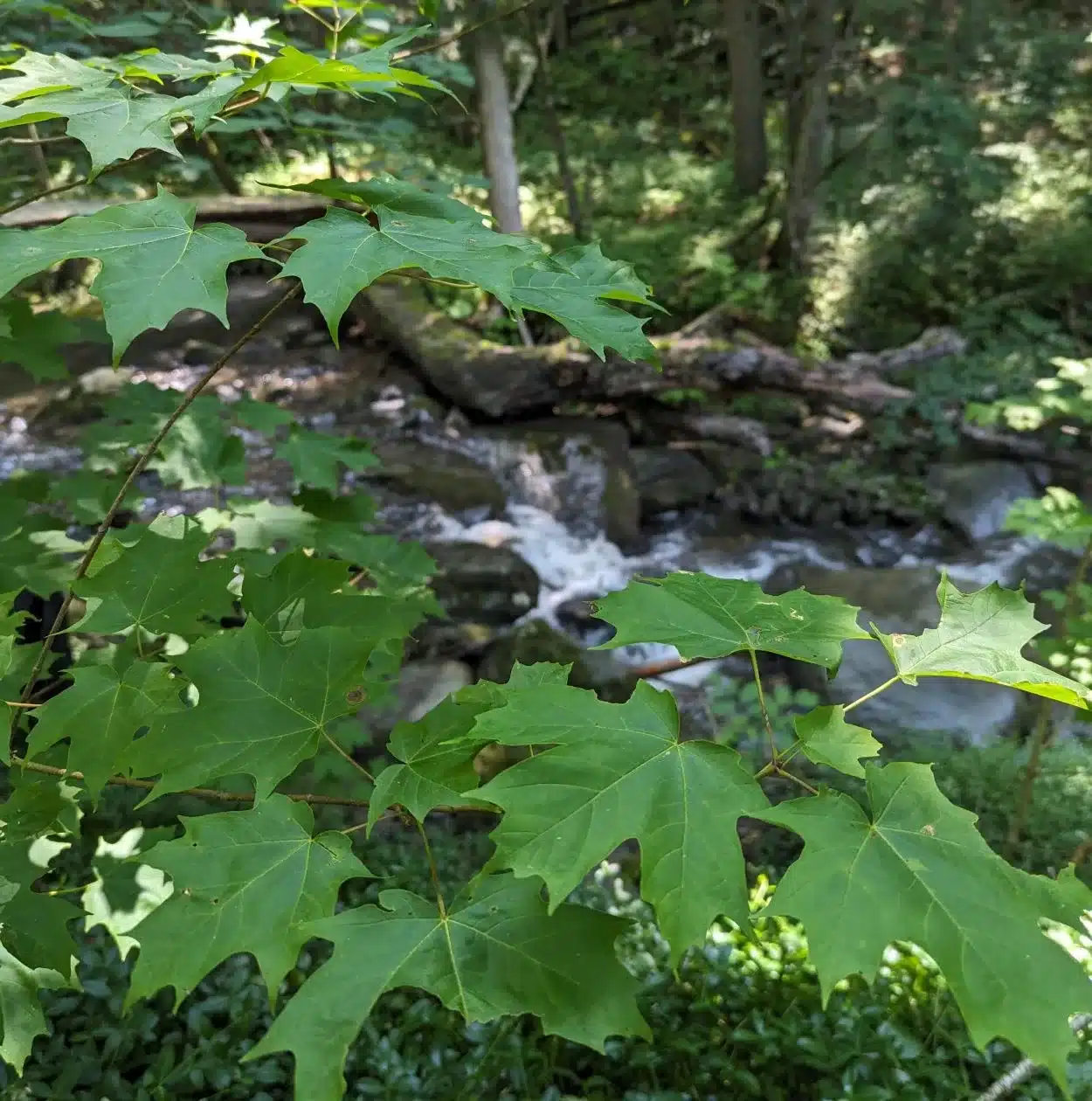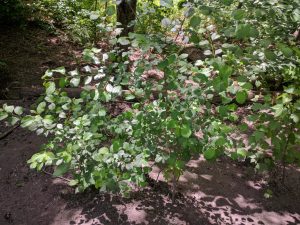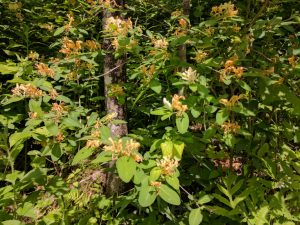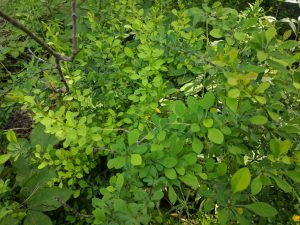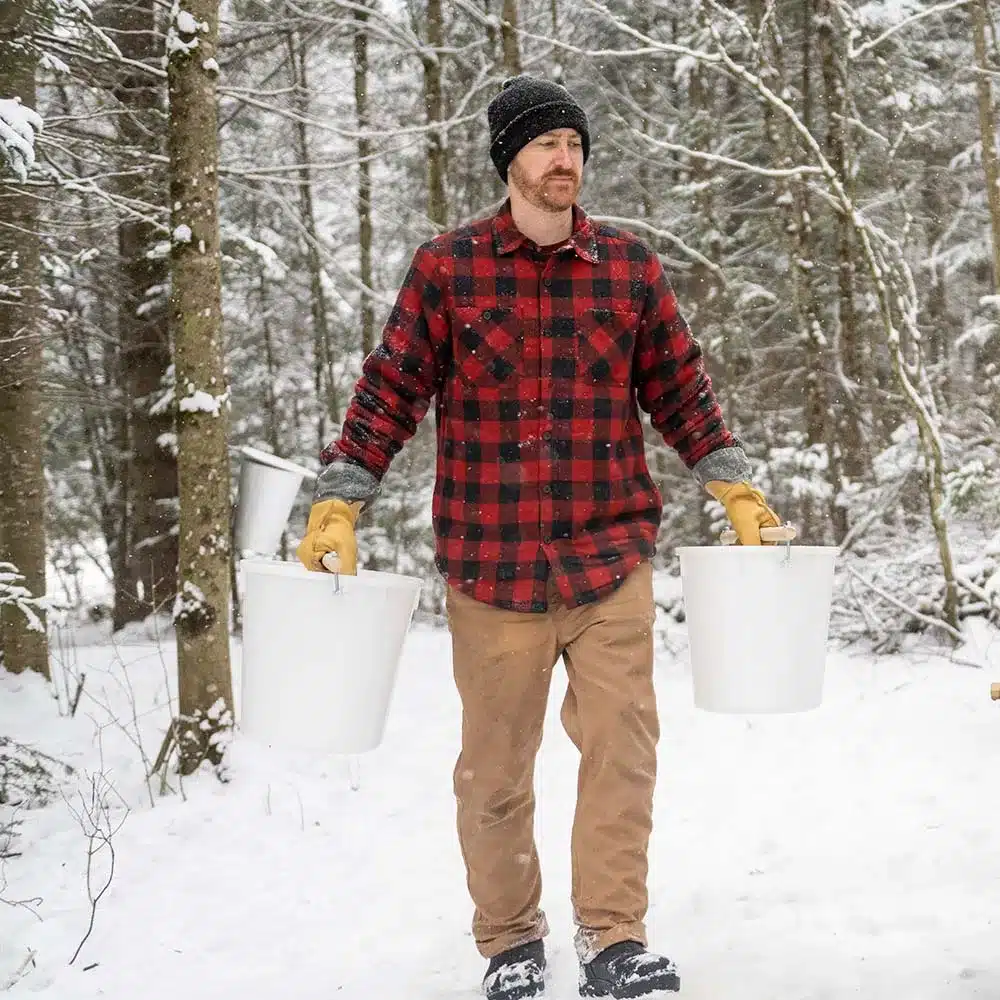The summer is a perfect time to start actively caring for your sugar woods. Here’s how!
Every ecosystem requires balance, including the ecosystem that supports your maple trees. Due to human activity, balance is a bit harder to come by now than it used to be. But there are things we humans can do to soften our imprint on the world, and caring for our woods is one of them.
According to at least one expert, there are three main things each of us can do to help care for our sugar woods and keep them healthy:
- Identify and remove invasive plant species,
- Ensure an ideal suite of tree species, AND
- Protect riparian buffers and other critter habitats by leaving waterfronts wooded and woods “messy.”
Let’s take those three in turn.
Removing Invasive Plants From Your Sugar Woods
An invasive plant is a non-native plant that does damage to its adopted ecosystem by thriving there. The three invasive plants that do the most damage in sugar country are buckthorn, honeysuckle and barberry. Removing them by cutting, pulling, or burning them will go a long way in protecting the forest habitat. While big maple producers may have too much land to eradicate these species, someone with a ten-acre plot, for example, can handle the task.
BUCKTHORN
HONEYSUCKLE
BARBERRY
Identification:
The first step to removal, of course, is identification. The Nature Conservancy has prepared handy information sheets on buckthorn, honeysuckle, and barberry. You can use these to distinguish the harmful plants from native flora. You can make color copies of these sheets or bring a device into the woods for reference. It’s also a great idea to sketch a map of your plot and/or bring some marking tape with you to mark the location of invasive species for future reference. For a more detailed plan, see our previous post on how to identify these invasive plants in your sugar woods. More tips for identification can be found here as well.
Removal:
After you’ve identified your invasive species, it’s time for removal. It is best to remove invasive plants from the ground in their entirety – roots and all – as long as the infestation covers a modest surface area. Root removal of infestations that cover a large surface area can leave bare ground ripe for other invasive plants to take root. While such removal on steep slopes can lead to soil erosion.
When pulling, it is important to get the entire root system as these plants propagate from the roots. For mature plants, however, cutting and covering with black plastic or a double layer of burlap is a respectable, next-best method. Complete coverage of all above-ground parts of the plant after cutting is necessary to keep the plant from repropogating. Whether you pulled or cut-and-covered, pause to pat yourself on the back for punctuality, and caring for your sugarwoods! Early detection and removal is key to controlling invasive plants.
What should you do with the invasive plants once you’ve removed them? First of all, think twice about bringing the invasive plants off-site. In Vermont, for example, it is actually illegal to do so unless you really know what you are doing. Also, note that home-composting invasive plants can result in more infestations if not done properly. Bagging your invasive plants and bringing them to the dump is a good option of last resort. But destroying these woody weeds in a bonfire is also probably fine. You always have the option of simply hanging the invasive plants on a nearby tree by its roots to dry and die. For more on invasive species removal, and caring for your sugar woods, read our previous post about our experience weeding our sugar woods.
Ensuring an Ideal Suite of Tree Species
Every kind of woods has an ideal suite of tree species that helps the ecosystem thrive. When you are a forester, you sweat the details. But homeowners can make an impact simply by focusing on variability. To begin, walk in your woods and catalog all of the species of trees you find there – including the understory (young trees). If what you find there is reasonably diverse – say around eight species – that’s great! You can care for your woods by just not cutting all or most of any single species. If what you find is not monocultural (sugar maple only) but is non-diverse (only a few species of trees) consider planting or clearing around an already-existing oak or two.
Oaks are great companion plants in northern hardwood forests; they are great habitats for moths, butterflies, and songbirds and provide a food source for bears, turkeys, and deer. They are also projected to do well in a warming climate. If you do have a sugar maple monoculture, planting hemlocks and red maples can help diminish the virulence of tent caterpillar invasions. Just take a couple of hours to look around, find out how diverse your woods are, and act accordingly. You can read about our experience cataloging our own sugar woods here.
Protecting Riparian Buffers and Other Habitats
While the first two steps in caring for your sugar woods are active, the last is passive. You can protect or create the potential for diversity for other species, including wildlife, by leaving some things alone. You should leave standing dead trees (called “snags”) and leave dead logs on the ground. Where bodies of water exist, ensure that riparian buffers (forested areas providing shade) are in place. Leaving waterfronts wooded and woods “messy” is enough. If you already have neat woods, don’t be afraid to leave a few brush piles in the forest to encourage critters to come, stay, and contribute to the balance.
Caring for your Sugar Woods
Caring for your sugar woods can improve your mood, make your maple trees happier, and bring some balance back into your woods. Many people ask when the best time to care for your sugar woods is, and our favorite answer is “any time you are in the woods” or “whenever your shears are sharp”. Take your time, breathe deep, and seek the slow.

